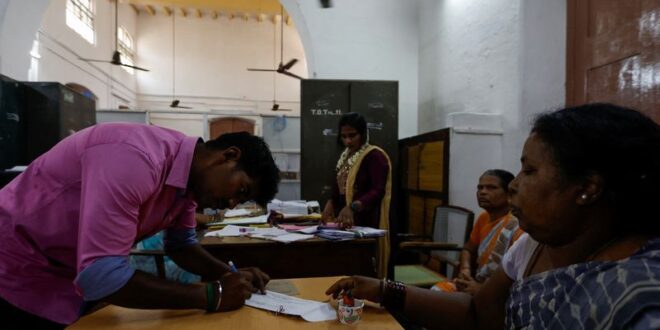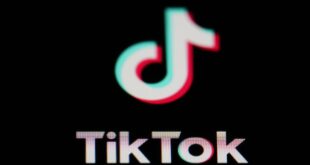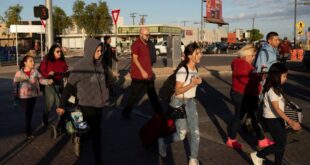(Reuters) – Nearly 1 billion Indians will be eligible to vote in the world’s biggest election starting this month. Opinion polls predict an easy win for Prime Minister Narendra Modi and his Bharatiya Janata Party (BJP),which would give him a record-equalling third straight term.
Here are some of the key issues in the elections to 543seats in the Lok Sabha, the lower house of parliament, that willbe held in seven phases between April 19 and June 1, with votecounting on June 4.
ECONOMIC DEVELOPMENT, INFLATION
India’s economy is expected to have grown by about 8% in thelast fiscal year ended March 31, the fastest among majorcountries.
In the past decade under Modi, the Indian economy has jumpedfive places to the fifth position in the world and he has”guaranteed” to lift it to third position should he win theelection. One of the highlights of the Modi era has beengleaming roads and bridges across the country, including in andaround New Delhi and Mumbai, its two major cities.
Fruits of the booming economy, however, are more visible inthe cities than in the vast countryside. A sharp price rise hasalso been a concern.
Retail inflation in 2022/23 accelerated to 6.7% from 5.5% in2021/22, and 6.2% the year ago. Annual retail inflation was5.09% in February.
WELFARE POLICIES
Since the COVID-19 pandemic, the government has been givingfree food rations to 814 million of India’s 1.42 billion people.Some critics have said the fact that the government feels theneed to support nearly 60% of India’s population with freecereal is a sign of uneven economic growth in the country.
By the end of last year, India’s richest citizens owned40.1% of its wealth, the highest since 1961, and their share oftotal income was 22.6%, the most since 1922, according to astudy by research group the World Inequality Lab.
Modi and his BJP have also tried to win over women voters byfocusing on their welfare, including through cash handouts anddomestic benefits such as piped water, 24/7 electricity andcooking gas connections.
HINDU REAWAKENING
Modi in January led the consecration of a grand temple toHindu God-king Ram on a site believed to be his birthplace,fulfilling a 35-year-old promise of the Hindu-nationalist BJP. AHindu mob in 1992 pulled down a 16th-century mosque on the site,which many Hindus believe was built over a demolished templeunder the Mughal ruler Babur.
The prime minister’s regular visits to Hindu temples acrossthe country are widely broadcast on news channels, whichpolitical analysts say helps his image of being the champion ofthe majority community that forms the BJP’s core support base.
At the same time, many Muslims have accused the governmentof effecting policies going against the community’s interest.The BJP says it works for all but appeases none, in a dig atopposition parties that have traditionally won the support ofMuslims.
Modi’s government has ended federal support for Muslimschools, or madrasas, and some BJP states have either closedmany of them or are on the verge of doing so, despite oppositionfrom Muslim leaders.
Modi has also implemented a citizenship law that has beencriticised as discriminating against Muslims, grantingnationality to Hindus, Parsis, Sikhs, Buddhists, Jains andChristians who fled to India due to religious persecution fromMuslim-majority Afghanistan, Bangladesh and Pakistan before Dec.31, 2014.
CORRUPTION
A government agency that investigates suspected moneylaundering has summoned, questioned, raided or arrested nearly150 opposition politicians in the past decade. In the sameperiod, it has investigated only about half a dozen ruling partypoliticians.
The highest profile arrest has been that of Delhi ChiefMinister Arvind Kejriwal, a senior opposition politician whodenies any corruption. Modi says agencies are free toinvestigate anyone as per his “zero-tolerance” policy oncorruption.
Opposition politicians have accused Modi of misusinggovernment agencies to target them for political gains. The mainopposition Congress, meanwhile, is battling tax demands, whichit has called an attempt to cripple it before the vote.
UNEMPLOYMENT
Modi first came to power in 2014 partly on the promise ofcreating tens of millions of jobs for the country’s youth buthas largely failed to deliver.
The unemployment rate rose to 8% in February, according tothe privately held Centre for Monitoring Indian Economy.According to government estimates, the unemployment rate rose to5.4% in the fiscal year ended March 2023, from 4.9% in 2013/14before Modi took over.
Nearly 16% of urban youth in the 15-29 age group remainedunemployed in 2022/23 due to poor skills and lack of qualityjobs, government data shows. Estimates by private agencies aremuch higher.
FARMERS
The BJP had promised to double farm income by 2022 in itsmanifesto for the last election, but there is no sign of that.
Protesting farmers, especially from the northern state ofPunjab, forced Modi in 2021 to roll back three farm reform laws,a rare policy reversal by him. This year, the farmers hit thestreets again demanding higher guaranteed prices for theirproduce, though the protests fizzled out within weeks.
GLOBAL STATURE
The BJP often highlights India’s rising global stature,backed by its economy, as a key achievement of Modi, especiallyafter hosting the G20 summit last year and successfullyevacuating its citizens stuck in Ukraine after Russia’s attack.
(Editing by Raju Gopalakrishnan)
 BeritaKini.biz Berita Viral Terkini di Malaysia
BeritaKini.biz Berita Viral Terkini di Malaysia





